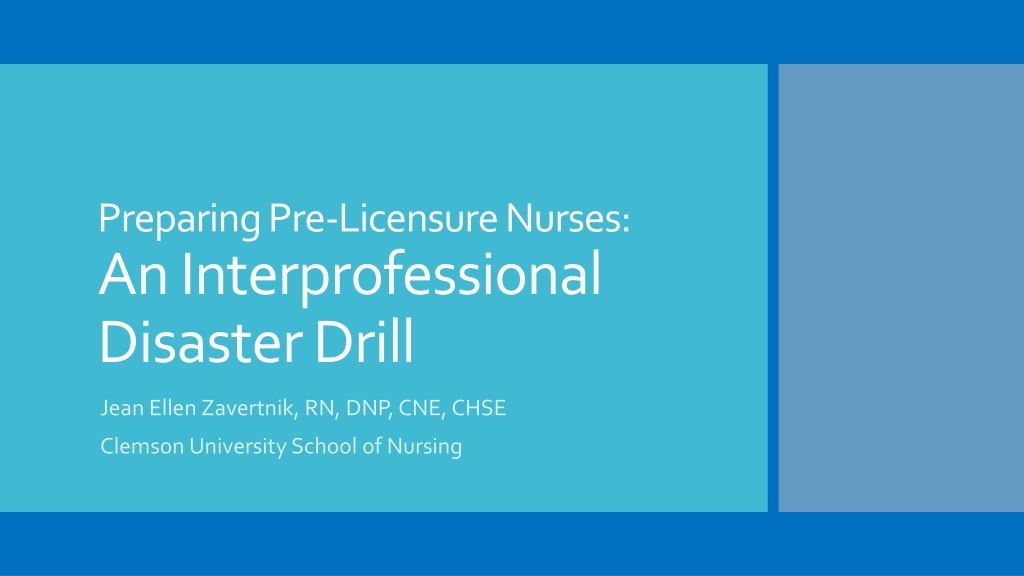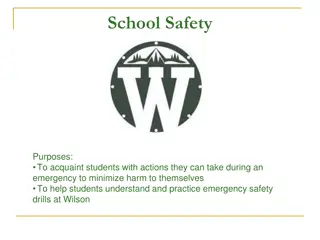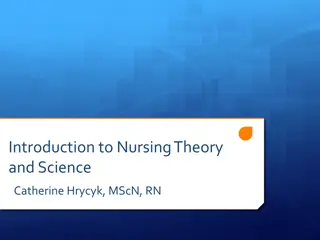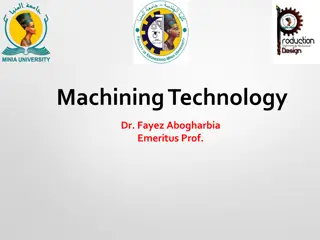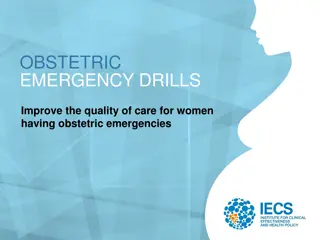Enhancing Nursing Students' Understanding Through Disaster Drills
Gain insights into the benefits of nursing students participating in disaster drills, focusing on developing empathy, understanding first responder roles, and demonstrating caring behaviors. Get a glimpse into the results of these drills, showing improved perceptions and appreciations among participants.
Download Presentation

Please find below an Image/Link to download the presentation.
The content on the website is provided AS IS for your information and personal use only. It may not be sold, licensed, or shared on other websites without obtaining consent from the author. Download presentation by click this link. If you encounter any issues during the download, it is possible that the publisher has removed the file from their server.
E N D
Presentation Transcript
Preparing Pre-Licensure Nurses: An Interprofessional Disaster Drill Jean Ellen Zavertnik, RN, DNP, CNE, CHSE Clemson University School of Nursing
Mass Casualty Shooter Drill First responders; Fire, Police, EMS Medical Students, Faculty Nursing Students, Faculty Hospital Professional
Gain insight/empathy for casualty participants in a disaster Enhance understanding of roles and responsibilities of law enforcement, fire service, and emergency medical services responding to a mass casualty incident Objectives Describe, from a personal perspective, casualty participant-first responder interactions with an emphasis on caring (providing comfort; building trust; and instilling hope)
What insights can nursing students gain by participating in a disaster drill? Questions for the audience: What caring behaviors are demonstrated in a disaster drill? Can participation in a simulated disaster drill help students to gain an appreciation of the role of first responders?
Mixed methods Quantitative: mean, median, mode, range, and standard deviations Qualitative: thematic analysis Two surveys One week post experience Optional IRB approved Method and Metrics
Results Caring Of the 50 student respondents, more than half (82%) of the participants observed acts of caring during the simulation, particularly from EMT (76%) and police (44%).
Results First Responder Interactionswith first responders provided nursing students a better understanding of first responder role and responsibilities (56%), however 17% of the nursing students did not see the role of the first responder differently following the simulation, 16% were undecided.
Themes teamwork and collaboration communication reaction and behavior triaging procedure importance of disaster drills and Interprofessional training
Significance Preparing pre- professional nursing student for disaster can lead to positive learning outcomes and facilitate transition to practice in the community health nursing setting.
Implications , Limitations, Replication The impact of exposing pre-professional healthcare students to a disaster may not be fully realized until specific data collection tools are available, however, playing the role of a casualty participant may allow the nursing students to gain insight into the importance of preparing for a disaster, empathy for disaster victims, and appreciate the role of emergency personnel in a disaster.
References: Foisy-Doll, C. & Leighton, K. (2018). Simulation Champions Fostering Courage, Caring, and Connection. Wolters Kluwer: Philadelphia. Interprofessional Education Collaborative. (2016). Core competencies for interprofessional collaborative practice: 2016 update. Washington, DC: Interprofessional Education Collaborative. Sanchez, L., Young, V., & Baker, M. (2018). Active shooter training in the emergency department: A safety initiative. Journal of Emergency Nursing. (in press), https://doi.org/10.1016/j.jen.2018.07.002
